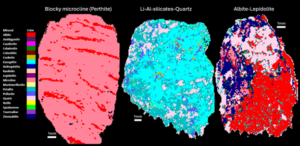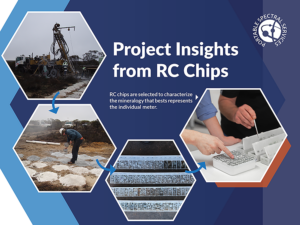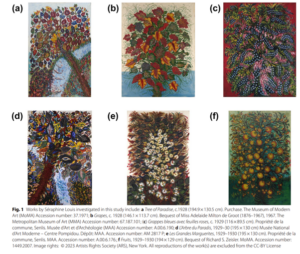
A Bright Future Ahead
Portable Spectral Services Announces Exciting Management Transition
One of the most beloved Christmas desserts has long been the Christmas pudding. A dense, brandy and fruit-laden cake, whose origins date back to 14th century England.
In the earliest versions of the pudding, a dried pea would be baked into the cake, a treasure that would supposedly bring good luck to whoever found it in their piece. Over time, the dried pea became a silver sixpence, but the belief that finding it would bring a year of good luck continued.
The silver sixpence which was first minted in 1551 was a denomination of sterling coinage worth 1⁄40 of one pound or half of one shilling. The British, throughout their history maintained well-documented minting practices, from 1816 the sixpence coin was produced with 92.5% Ag. This amount decreased to 50% in 1920 before being replaced entirely by a Cu-Ni alloy in 1946 as the price of silver increased post-war, and mints around the world removed the precious metal from production.
Australia inherited the sixpence into its currency in the early 1900s, but now modern Australian coins are made primarily of copper, nickel, and aluminium, making them unsafe to add into food, so reaching into the spare change jar for your holiday baking may not be the best idea.
Changes to the metals used to mint coins relative to the value of those metals is nothing new. A similar shift away from silver currency after the deterioration of Imperial Rome can also be seen in historical Roman and Celtic coins.
Recently, a group of 29 such coins from a private collection (Figure 1) were scanned at 30 µm resolution using a Bruker M4 TORNADO. The M4 TORNADO utilises Micro-XRF spectroscopy, a non-destructive analytical method, to determine elemental (and mineralogical if relevant) composition without worrying that the analysis will affect a sample’s structural integrity.
Resulting elemental maps of the M4 TORNADO scan show surface impurities and element relationships within and between the different coins. While the scan reveals the presence of Zn and Sn in some of the coins (as well as trace levels of Pb, Si, Fe, Ca, and P), the prevailing elements in all coins are either Ag or Cu (Figure 2). Those coins that were produced in Imperial Rome surrounding its peak in 117 A.D. are almost entirely silver, while those produced after this period are more copper dominant. An intensity heatmap can also be used to track the Ag abundance over time (Figure 3).
The decrease over time of the silver content in these Roman coins can be tracked over time to match the rise and fall of the empire, Micro-XRF technology also provides the ability to quantify datasets to provide an additional layer of information on top of the visual elemental maps shown above. This helps in identifying the apparent substitution of Ag by Cu over time. Figure 4 further illustrates this phenomenon.
Some key takeaways from the plots above include:
While the absolute value of a minted coin is certainly affected by the removal of a precious metal like silver, it also affects the suitability of the coin to be safely added to the Christmas pudding (something that governments past and present probably do not consider).
Instead, food safe coins can sometimes be purchased online specifically for Christmas. Otherwise perhaps the original dried pea is the best choice for this year’s pudding.
Or maybe just make a pavlova.
For further depth on the topic of these Roman coins, the following link can be used.
If you are interested in having your own sample analysed by micro-XRF, contact Portable Spectral Services at [email protected].
For more information on micro-XRF spectroscopy visit www.microxrf.com.au/

Portable Spectral Services Announces Exciting Management Transition

Our tool introduces uXRF (micro-X-ray fluorescence) scanning technology to RC chip analysis, enabling rapid, non-destructive, and quantitative analysis of major, minor, and trace mineral phases.

Automated micro-X-ray fluorescence (micro XRF) technology emerges as a powerful tool to rapidly and accurately capture the mineralogy of rock chip, RC and AC samples.

Findings of an ongoing regional evaluation study over concealed Proterozoic lithologies known to host magmatic nickel sulphides with potential to host other base-metal, gold and rare earth elements (“REE”) systems within the Fraser Range, Western Australia.

Findings of an ongoing regional evaluation study over concealed Proterozoic lithologies known to host magmatic nickel sulphides with potential to host other base-metal, gold and rare earth elements (“REE”) systems within the Fraser Range, Western Australia.

Findings of an ongoing regional evaluation study over concealed Proterozoic lithologies known to host magmatic nickel sulphides with potential to host other base-metal, gold and rare earth elements (“REE”) systems within the Fraser Range, Western Australia.
